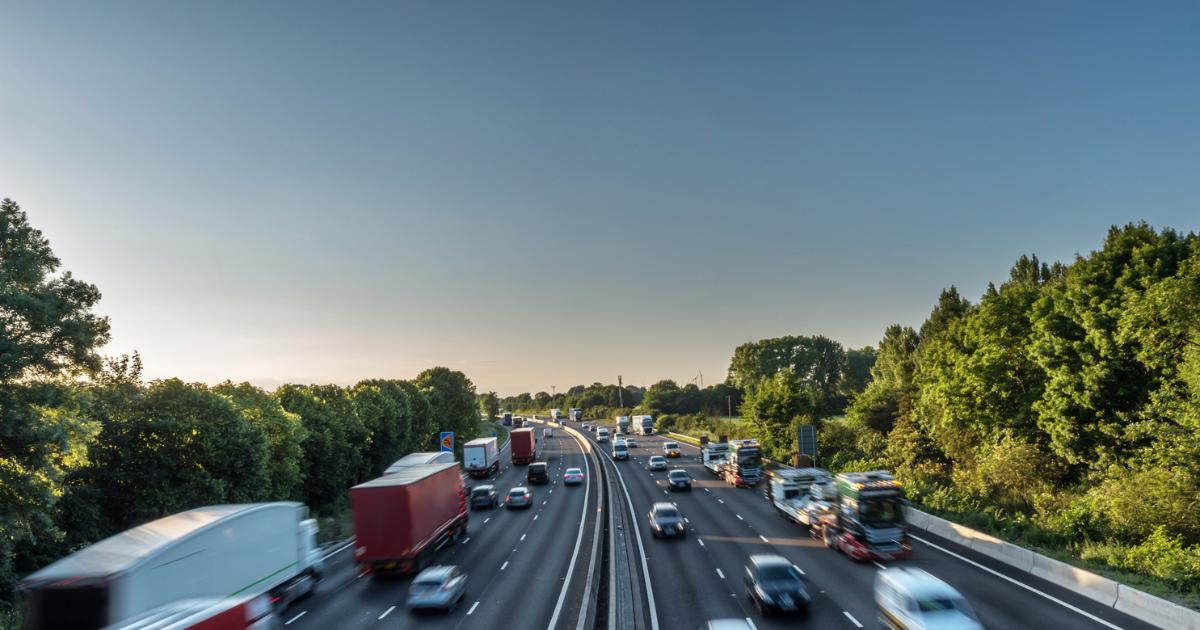The Highway Code contains all the rules you need to know for driving safely on our roads but motoring experts at Dick Lovett have analysed the Department for Transport’s data and revealed that one in four drivers (25%) don’t follow the simple two-second rule.
So, when driving they don’t leave even the minimum two-second gap between themselves and the car in front.
Drivers failing to follow Highway Code’s simplest rule
The experts encouraged drivers to follow the rule as “every second makes a huge difference.”
Their calculations found that leaving just one second less means losing just over 31 metres at motorway speeds or more than seven car lengths.
Here’s how much distance is lost per second at different speeds, according to the experts at Dick Lovett:
- 20 mph: 8.9 m per second
- 30 mph: 13.4 m per second
- 40 mph: 17.9 m per second
- 50 mph: 22.4 m per second
- 60 mph: 26.8 m per second
- 70 mph: 31.3 m per second
To help drivers stay safe on the road, Alex Lee, one of the experts, has shared advice on how to make sure you’re leaving enough space.
They suggest using a fixed marker: “Choose something fixed, like a lamppost or road sign. When the car in front passes it, start counting ‘one-thousand-and-one, one-thousand-and-two.’ If you pass the marker before you finish, you’re too close.”
The expert added: “In the rain, double your count to four seconds, and in ice or snow, leave as much as ten times the normal gap. Braking distances can rise sharply, so there’s no such thing as leaving too much space in poor weather.”
You should use time, not distance, according to Alex: “Metres are hard to judge when you’re moving, but time works at any speed. Counting seconds keeps it simple, whether you’re in town at 30mph or on the motorway at 70mph”.
With a quarter of drivers failing to leave even the minimum safe gap, Dick Lovett is urging motorists to check their driving habits, as a simple count of two seconds could make all the difference in avoiding a collision.
What does the Highway Code say about the two-second rule?
According to the Government website, National Highways previously shared the following advice in 2022: “The Highway Code tells drivers to allow at least a two-second gap between you and the vehicle in front on roads carrying faster-moving traffic and in tunnels where visibility is reduced.
10 Obscure driving laws you may not know
“The gap should be wider as speeds increase. It rises to 2.4 seconds – about 53 metres – when driving at 50mph and 3.1 seconds – or 96 metres – at 70mph.
“Furthermore, the gap should be at least doubled on wet roads and increased still further on icy roads.
“To use the rule, drivers should allow the vehicle in front to pass a fixed object such as a lamp post or road sign then count to two seconds. If they reach two seconds before reaching the reference marker they need to drop back.”
What is tailgating?
Driving Test Success explains what tailgating is and why you shouldn’t do it.
Recommended reading:
It says: “Driving extremely close to the car in front is called ‘tailgating’, and is particularly dangerous. If you are being tailgated by someone, then gently ease off the gas and allow the space in front of you to increase.
“You really don’t want to put yourself in a position where you have to brake from being too close to the car in front.
“If the tailgater is still close behind and happens to hit you in the rear, then, if you have left plenty of space in front of you, your vehicle will not impact the one in front, possibly preventing a major pile up. It also makes the insurance situation a little less complicated!”


